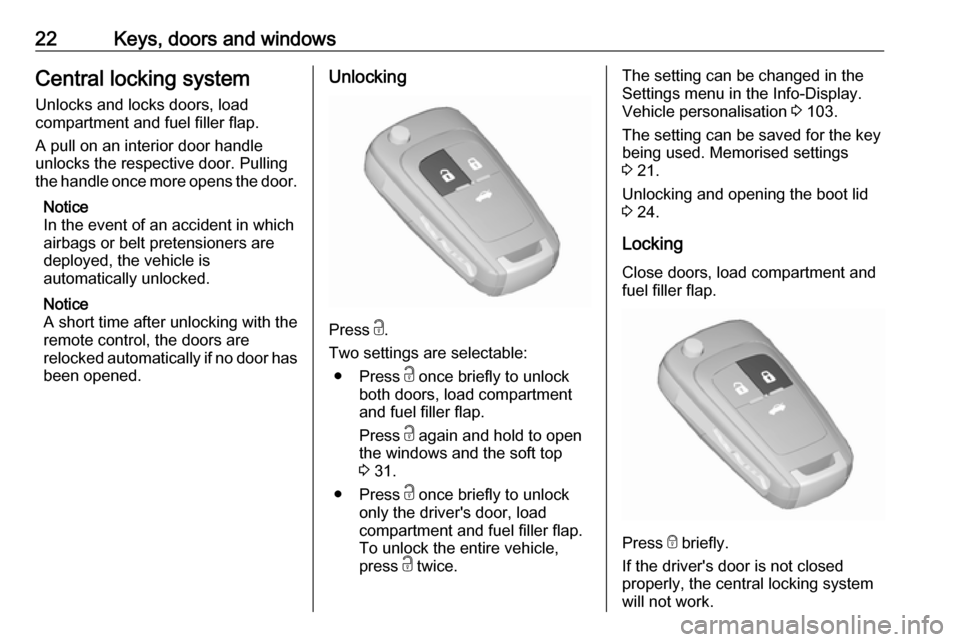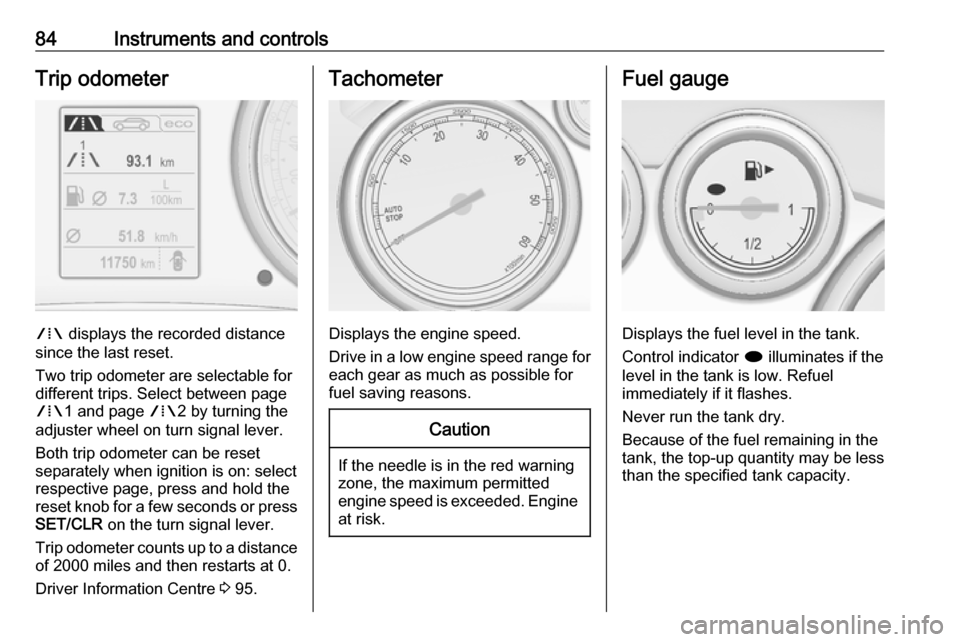ESP VAUXHALL CASCADA 2016.5 Owner's Manual
[x] Cancel search | Manufacturer: VAUXHALL, Model Year: 2016.5, Model line: CASCADA, Model: VAUXHALL CASCADA 2016.5Pages: 263, PDF Size: 7.72 MB
Page 5 of 263

Introduction3Vehicle specific dataPlease enter your vehicle's data on
the previous page to keep it easily
accessible. This information is
available in the sections "Service and
maintenance" and "Technical data"
as well as on the identification plate.
Introduction
Your vehicle is a designed
combination of advanced technology, safety, environmental friendliness
and economy.
This Owner's Manual provides you
with all the necessary information to
enable you to drive your vehicle
safely and efficiently.
Make sure your passengers are
aware of the possible risk of accident
and injury which may result from
improper use of the vehicle.
You must always comply with the
specific laws and regulations of the
country that you are in. These laws
may differ from the information in this Owner's Manual.
Disregarding the description given in
this manual may affect your warranty.When this Owner's Manual refers to a
workshop visit, we recommend your
Vauxhall Authorised Repairer.
All Vauxhall Authorised Repairers
provide first-class service at
reasonable prices. Experienced
mechanics trained by Vauxhall work according to specific Vauxhall
instructions.
The customer literature pack should
always be kept ready to hand in the
vehicle.
Using this manual ● This manual describes all options
and features available for this
model. Certain descriptions,
including those for display and
menu functions, may not apply to
your vehicle due to model
variant, country specifications,
special equipment or
accessories.
● The "In brief" section will give you
an initial overview.● The table of contents at the beginning of this manual and
within each section shows where the information is located.
● The index will enable you to search for specific information.
● This Owner's Manual depicts left-
hand drive vehicles. Operation is similar for right-hand drive
vehicles.
● The Owner's Manual uses the engine identifier code. The
corresponding sales designation
and engineering code can be
found in the section "Technical
data".
● Directional data, e.g. left or right, or front or back, always relate to
the direction of travel.
● Displays may not support your specific language.
● Display messages and interior labelling are written in bold
letters.
Page 24 of 263

22Keys, doors and windowsCentral locking system
Unlocks and locks doors, load
compartment and fuel filler flap.
A pull on an interior door handle
unlocks the respective door. Pulling the handle once more opens the door.
Notice
In the event of an accident in which
airbags or belt pretensioners are
deployed, the vehicle is
automatically unlocked.
Notice
A short time after unlocking with the
remote control, the doors are
relocked automatically if no door has
been opened.Unlocking
Press c.
Two settings are selectable: ● Press c once briefly to unlock
both doors, load compartment
and fuel filler flap.
Press c again and hold to open
the windows and the soft top 3 31.
● Press c once briefly to unlock
only the driver's door, load
compartment and fuel filler flap.
To unlock the entire vehicle,
press c twice.
The setting can be changed in the
Settings menu in the Info-Display.
Vehicle personalisation 3 103.
The setting can be saved for the key
being used. Memorised settings
3 21.
Unlocking and opening the boot lid
3 24.
Locking
Close doors, load compartment and
fuel filler flap.
Press e briefly.
If the driver's door is not closed
properly, the central locking system will not work.
Page 34 of 263

32Keys, doors and windowsOperate the switch for the respective
window by pushing to open or pulling to close.
Pushing or pulling gently to the first
detent: window moves up or down as long as the switch is operated.
Pushing or pulling firmly to the second
detent then releasing: window moves
up or down automatically with safety
function enabled. To stop movement, operate the switch once more in the
same direction.
Central switch ,
Switch in the centre console to
operate all windows.
Push switch , briefly to open all
windows automatically.
Pull switch , briefly to close all
windows automatically.
Safety function If the window glass encounters
resistance above the middle of the window during automatic closing, it is
immediately stopped and opened again.
Override safety function In the event of closing difficulties due
to frost or the like, switch on the
ignition, then pull the switch to the first
detent and hold. The window moves
up with safety function disabled. To
stop movement, release the switch.
Comfort operating with the
remote control
The windows and the soft top can be
operated remotely from outside the
vehicle.
Opening
● Press c once briefly: the doors
are unlocked.
● Press c once more for two
seconds: the windows move
down automatically. Press c
longer: the soft top will be
opened. Press and hold c until
soft top is completely opened.
Release c during opening the soft
top: movement stops for 10 seconds;
pressing c once more continues
opening.
Closing ● Press e once briefly: the doors
are locked.
Page 38 of 263

36Keys, doors and windowsSafety stop
The button on the remote control or
the switch in the centre console must
be actuated until the soft top is in its
respective end position. Releasing
the button or the switch during
operation stops soft top movement
immediately. The soft top remains in
intermediate position only for a
certain time. After this time a warning chime sounds, the hydraulic pressure
in the system decreases and the soft
top can start to move by itself.
Actuating button or switch once more
continues operation.
Requirements for operation ● Vehicle is stationary or driving with a speed up to 31 mph.
● Load compartment partition isfolded out, pass-through flap is
closed 3 71.
● Soft top lid is engaged in closed position.
● Boot lid is completely closed.
● Outside temperature is not lower than -7 °C for opening and
-10 °C for closing.
● Vehicle battery voltage is sufficient.
● The system is not overloaded by repeated operation (max. 5
complete cycles in succession).If any of these requirements are
not fulfilled, a warning chime sounds and a message appears
in the Driver Information Centre
when the switch is actuated and
the soft top will not open or close.
● There must be no objects in front
of the rear window or in the pivot
area of the soft top and the soft
top lid.
If the automatic drive is not
operational when the soft top is open,
execute a manual closing process,
see the following instructions in
"Manual closing in the event of a
system fault".
Page 55 of 263

Seats, restraints53Armrest
The armrest can be slid forwards by
10 cm. Under the armrest there is a
storage compartment.
Armrest storage 3 70.
Heating
Adjust heating to the desired setting
by pressing ß for the respective seat
one or more times. The lighting LEDs in the button indicate the setting.
Prolonged use of the highest setting
for people with sensitive skin is not
recommended.
Seat heating is operational when engine is running.
Seat heating is also operational
during an Autostop.
Stop-start system 3 138.
Ventilating
Adjust ventilation to the desired
setting by pressing A for the
respective seat one or more times.
The lighting LEDs in the button
indicate the setting.
Ventilated seats are operational with
ignition on.
Seat ventilation is also operational
during an Autostop.
Stop-start system 3 138.
Page 56 of 263

54Seats, restraintsSeat belts
The seat belts are locked during hardacceleration or deceleration of the
vehicle holding the occupants in the
sitting position. Therefore the risk of
injury is considerably reduced.
9 Warning
Fasten seat belt before each trip.
In the event of an accident, people
not wearing seat belts endanger their fellow occupants and
themselves.
Seat belts are designed to be used by only one person at a time. Child
restraint system 3 62.
Periodically check all parts of the belt
system for damage, pollution and
proper functionality.
Have damaged components
replaced. After an accident, have the
belts and triggered belt pretensioners replaced by a workshop.
Notice
Make sure that the belts are not
damaged by shoes or sharp-edged
objects or are trapped. Prevent dirt
from getting into the belt retractors.
Seat belt presenter
The seat belt presenter is a comfort
feature that enables the front
passengers to fasten the seat belts
conveniently by bringing the belts to
the front.
The presenter comes out when:
● The respective door is closed and ignition is switched on.
● The ignition is on and the door is closed.
The presenter retracts when: ● The respective door is opened again.
● The key is removed from ignition switch.
● The respective latch plate is inserted into the buckle.
Page 65 of 263

Seats, restraints639Warning
When using a child restraint
system on the front passenger
seat, the airbag systems for the
front passenger seat must be
deactivated; if not, the triggering of the airbags poses a risk of fatal
injury to the child.
This is especially the case if rear-
facing child restraint systems are
used on the front passenger seat.
Airbag deactivation 3 61.
Airbag label 3 57.
9 Warning
When using child restraint
systems on the rear seats, ensure that the backrests are engaged
securely in upright position.
Selecting the right system
The rear seats are the most
convenient location to fasten a child
restraint system.
Children should travel facing
rearwards in the vehicle as long as
possible. This makes sure that the child's backbone, which is still very
weak, is under less strain in the event of an accident.
Suitable are restraint systems that
comply with valid UN ECE
regulations. Check local laws and
regulations for mandatory use of child restraint systems.
Ensure that the child restraint system
to be installed is compatible with the
vehicle type.
Ensure that the mounting location of
the child restraint system within the
vehicle is correct, see following
tables.
Allow children to enter and exit the
vehicle only on the side facing away
from the traffic.
When the child restraint system is not in use, secure the seat with a seat beltor remove it from the vehicle.
Notice
Do not affix anything on the child
restraint systems and do not cover
them with any other materials.A child restraint system which has
been subjected to stress in an
accident must be replaced.
Page 68 of 263

66Seats, restraintsIL:Suitable for particular ISOFIX restraint systems of the 'specific-vehicle', 'restricted' or 'semi-universal' categories.The ISOFIX restraint system must be approved for the specific vehicle type.IUF:Suitable for ISOFIX forward-facing child restraint systems of universal category approved for use in this weight class.X:No ISOFIX child restraint system approved in this weight class.*:Move the respective front seat ahead of the child restraint system in one of the foremost adjustment positions.**:Remove respective rear head restraint when using child restraint systems in this size class. 3 45.
ISOFIX size class and seat device
A – ISO/F3:Forward-facing child restraint system for children of maximum size in the weight class 9 to 18 kg.B – ISO/F2:Forward-facing child restraint system for smaller children in the weight class 9 to 18 kg.B1 – ISO/F2X:Forward-facing child restraint system for smaller children in the weight class 9 to 18 kg.C – ISO/R3:Rear-facing child restraint system for children of maximum size in the weight class up to 18 kg.D – ISO/R2:Rear-facing child restraint system for smaller children in the weight class up to 18 kg.E – ISO/R1:Rear-facing child restraint system for young children in the weight class up to 13 kg.
Page 83 of 263

Instruments and controls81
Selectable setting options:● Set time: Changes the time
shown on the display.
● Set date: Changes the date
shown on the display.
● Set time format : Changes
indication of hours between 12 h
and 24 h.
● Set date format : Changes
indication of date between MM/
DD/YYYY and DD.MM.YYYY .
● Display clock : Switches on/off
indication of time on the display.
● RDS clock synchronization : The
RDS signal of most VHF
transmitters automatically sets
the time. RDS time
synchronisation can take a few
minutes. Some transmitters do
not send a correct time signal. In
such cases, it is recommended to
switch off automatic time
synchronisation.
Vehicle personalisation 3 103.
Time and date settings
Navi 950/Navi 650/CD 600
Press Config then select the Time
and Date menu item to display the
respective submenu.Notice
If RDS Auto Time Adjust is activated,
time and date are automatically set by the system.
See Infotainment manual for further information.
Set time
To adjust the time settings, select the
Set Time menu item. Turn the
multifunction knob to adjust the first
setting.
Press the multifunction knob to
confirm the input. The coloured
background moves to the next
setting.
Adjust all settings.
Set date
To adjust the time settings, select the Set Date menu item. Turn the
multifunction knob to adjust the first
setting.
Press the multifunction knob to
confirm the input. The coloured
background moves to the next
setting.
Adjust all settings.
Page 86 of 263

84Instruments and controlsTrip odometer
W displays the recorded distance
since the last reset.
Two trip odometer are selectable for
different trips. Select between page
W 1 and page W2 by turning the
adjuster wheel on turn signal lever.
Both trip odometer can be reset
separately when ignition is on: select
respective page, press and hold the
reset knob for a few seconds or press
SET/CLR on the turn signal lever.
Trip odometer counts up to a distance
of 2000 miles and then restarts at 0.
Driver Information Centre 3 95.
Tachometer
Displays the engine speed.
Drive in a low engine speed range for each gear as much as possible for
fuel saving reasons.
Caution
If the needle is in the red warning
zone, the maximum permitted
engine speed is exceeded. Engine at risk.
Fuel gauge
Displays the fuel level in the tank.
Control indicator i illuminates if the
level in the tank is low. Refuel
immediately if it flashes.
Never run the tank dry.
Because of the fuel remaining in the
tank, the top-up quantity may be less
than the specified tank capacity.